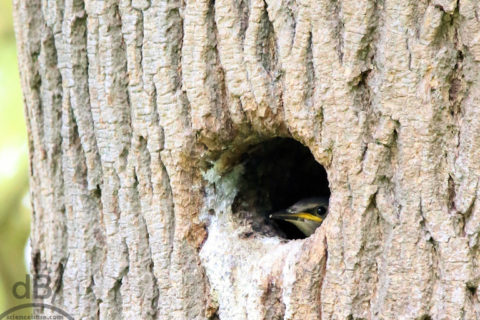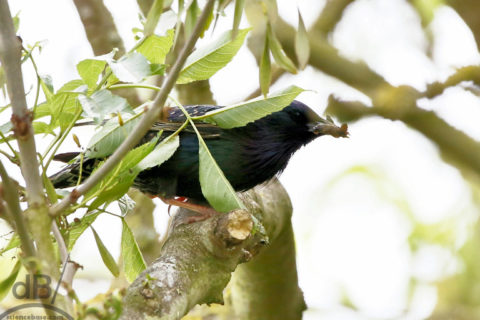I’ve been walking past trees with lots of woodpecker holes recently and, as regular readers will know I’ve photographed the great spotted woodpeckers that are feeding chicks in the highest hole. Got some good shots of them flying in and out of the male with a load of grubs in its mouth ready to enter the nest.
It’s always feeding time in a bird’s nest whether that’s a hollow in a tree, a nest of twigs and feathers or a ground nest, which might be a simple depression on a sandbank or in a field.

Starling chicks (Sturnus vulgaris) are no different in their voracity for invertebrates. I was aware of parents flying in and out of a hole in a tree next to the woodpecker residence and caught sight of a chick poking its head above the proverbial parapet while its parent clacked and yacked on a nearby branch. It was only happy to fly in to nest to feed the chick(s) once I’d moved a few metres further away.

The common, or European, starling is a nosy bird with glossy black plumage that has something of a metallic sheen and shimmers with greens and puples in sunlight. It might also be speckled white at different times of the year. The legs are pink and the bill is black in winter and yellow in the summer.
Meanwhile, just been through my photos from Botswana, lots of birds, but no sight of a superb starling, which I remember being particularly fascinated by 25 years ago…just for the name alone.